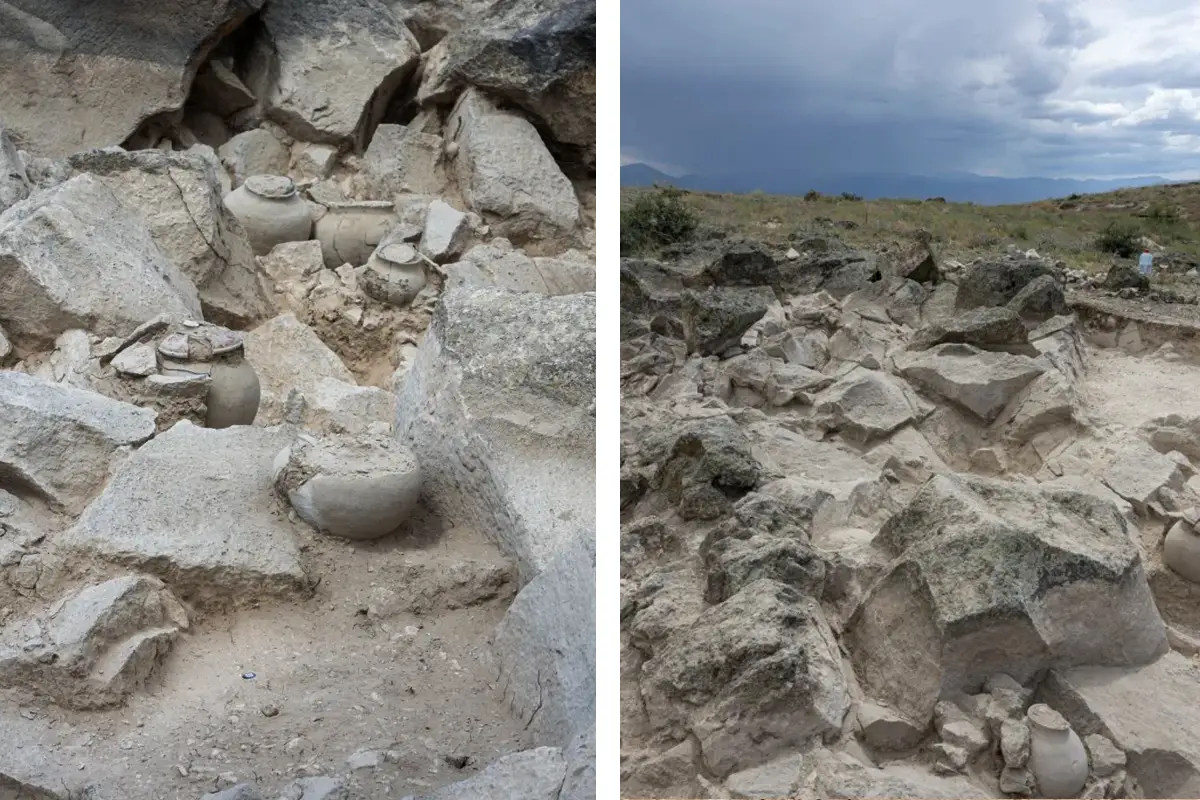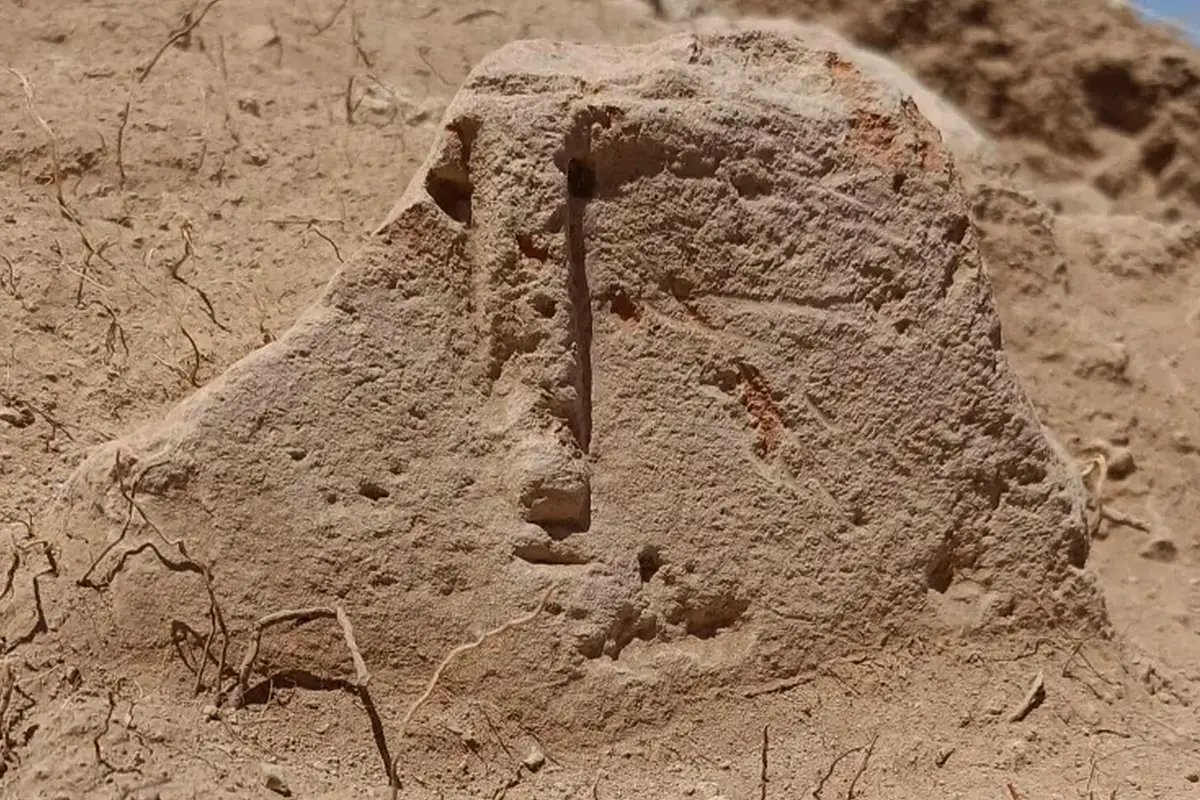Recent excavations on Saint David’s Hill in the ancient fortress-city of Argištiḫinili have led to the discovery of a stone slab carved with a human-faced idol.
First founded in the 8th century BC during the expansion of the Urartians in the Transcaucasus, Argištiḫinili was likely intended as an administrative centre (rather than a military base) over the fertile Ararat plain.
The excavation, led by Dr. Mateusz Iskra from the University of Warsaw, and Hasmik Simonyan from the Institute of Archaeology and Ethnography in Armenia, unearthed a series of rooms that once served as domestic and storage quarters for the city inhabitants around the late 7th or 6th century BC.
“We were surprised by the good state of preservation of these structures. The excavated sections of the rooms still contain the original mud brick and stone slab floors,” said Dr. Iskra, head of the Middle Eastern Studies Department at the PCMA UW.
Within one of the rooms, the researchers discovered a buried masonry chest containing a stone slab, which, upon closer inspection, was revealed to be carved with a simplified human face. “It’s an idol figure, preserved in its original context,” added Dr. Iskra.
Crafted from volcanic tuff, the 1-metre-tall object depicts a stylised face with pronounced eyebrows, closely set eyes, a long nose, and narrow lips. Archaeologists note similarities to other carved figures found at Armenian sites, often interpreted as connected to ancestor worship or fertility cults.
The excavation also led to the discovery of a cremation cemetery containing twelve carefully placed urns accompanied by grave goods. According to experts, the exceptional state of preservation makes it one of the most significant and best-preserved urn-field cemeteries ever found in Armenia.
“The urns and associated artefacts provide valuable insight into the funerary customs and spiritual beliefs of the communities that lived in the Urartian cultural sphere during the early first millennium BC,” said the PCMA UW.
Header Image Credit : PAP
Sources : Science In Poland







